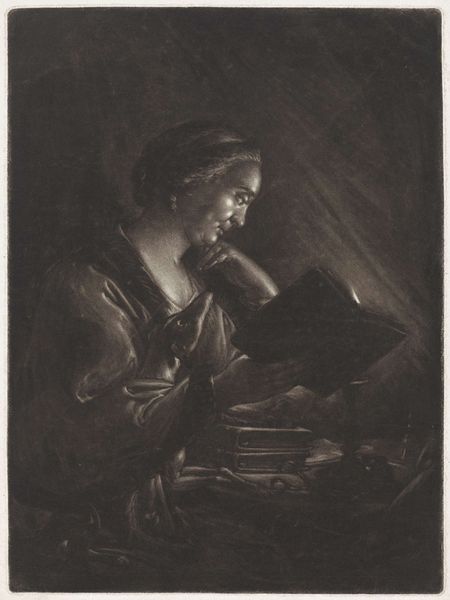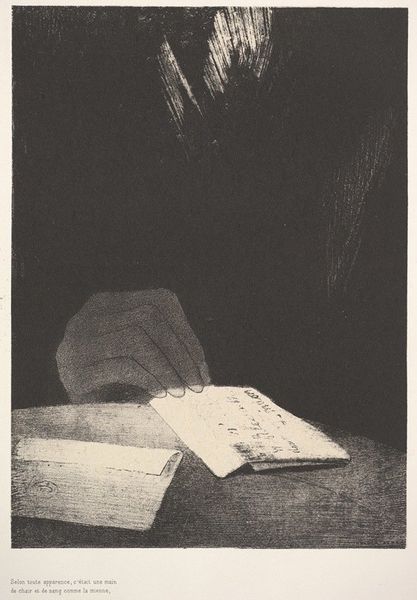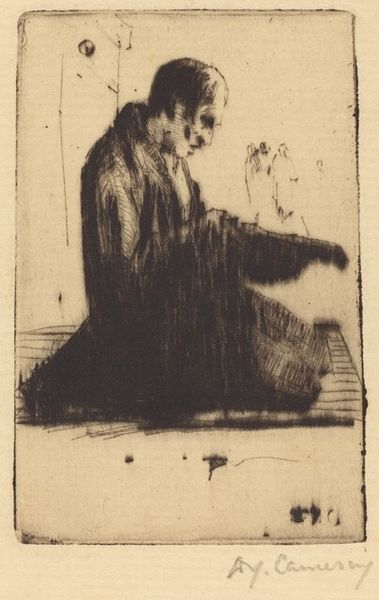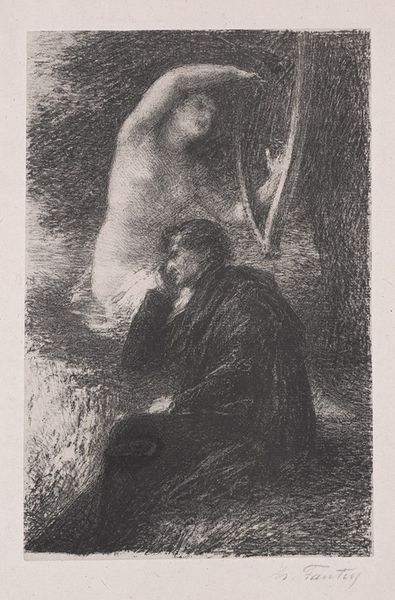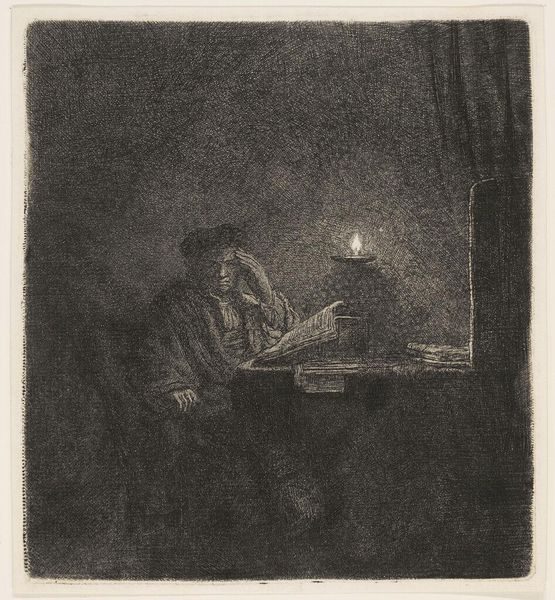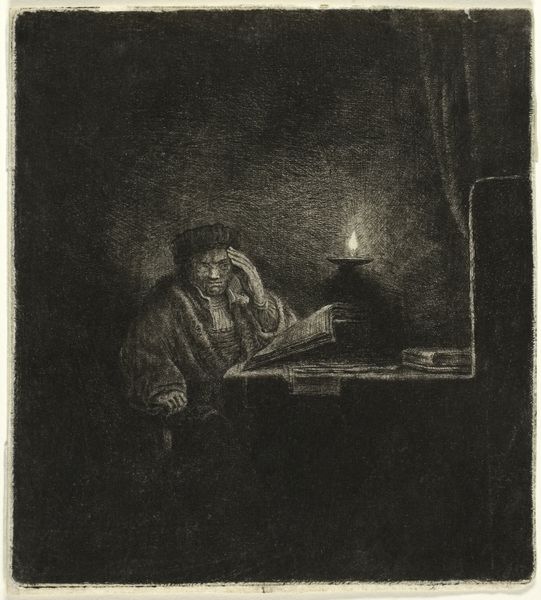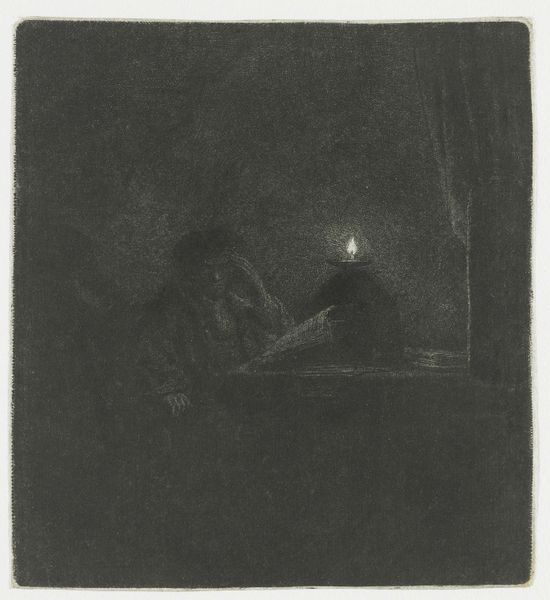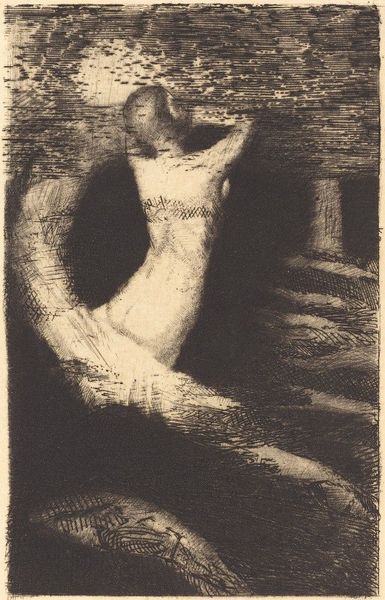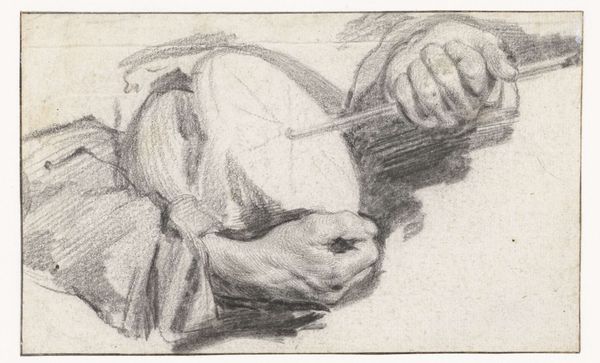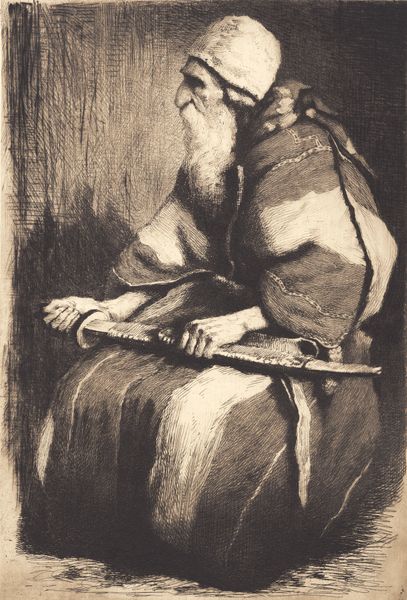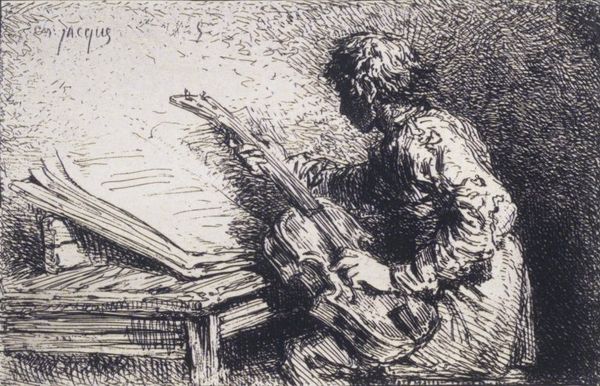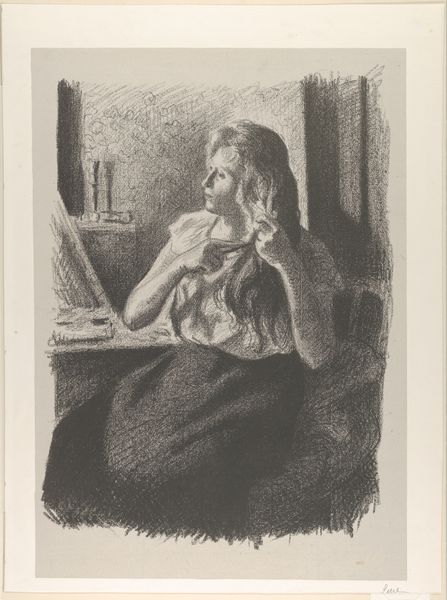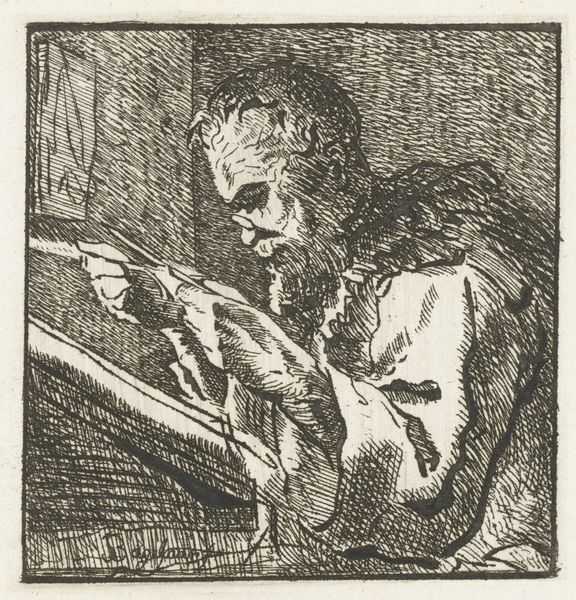
print, etching, engraving
#
portrait
# print
#
etching
#
figuration
#
pencil drawing
#
history-painting
#
engraving
#
realism
Dimensions: image: 261 x 358 mm sheet: 322 x 472 mm
Copyright: National Gallery of Art: CC0 1.0
Curator: Looking at this print, what immediately comes to mind? Editor: I'm struck by the intensity of the light in contrast with the overall somber tone. It gives a heroic air to what would otherwise be a scene of everyday labor. There’s a strong sense of focus. Curator: The artwork is entitled "Welder" by Ethel V. Ashton, made around 1945. It's an etching, a type of printmaking that uses acid to create the image on a metal plate. The figure is hunched over their work, intensely focused on the task at hand. It embodies so much about the industrial workforce. Editor: Exactly. The stark contrasts and heavy shading contribute to this very palpable feeling of being present in that moment with the worker. What can you tell me about Ashton's choices during this particular moment in time? Curator: During the 1940s, in the throes of World War II and its immediate aftermath, many artists aimed to document and valorize the contributions of laborers to the war effort and industrial growth. This etching romanticizes this depiction. It presents industry, and by extension labor, as almost beautiful in the shower of sparks around them. This image really elevates the individual worker to the forefront. Editor: I agree that this artwork monumentalizes the contributions of everyday laborers, though it is a tad melancholic. I read into this the social history surrounding women's roles in the workplace, because women entered industrial workforces in larger numbers when men were abroad during the war, but after were expected to return to domestic work. This artwork encapsulates that changing landscape. Curator: The formal choices highlight this further. The realism employed presents the figure with dignity and respect. I'm thinking about the context this piece was created in, and whether it can accurately reflect this important history. There's something interesting about the lack of facial details, like anyone can be the person working to keep society in motion. It can reflect, or tokenize, a wider history. Editor: True, and thinking about this artwork more, it could also function to celebrate women in these expanded labor roles during and after the war effort. Although they may not be celebrated otherwise, artworks can act as counter-narratives and social activism efforts by giving visibility to unrecognized communities. Curator: Absolutely. So many facets of this artwork give way to more interesting explorations. Editor: I am moved by how one, seemingly straightforward, image gives voice to a deeper conversation!
Comments
No comments
Be the first to comment and join the conversation on the ultimate creative platform.
